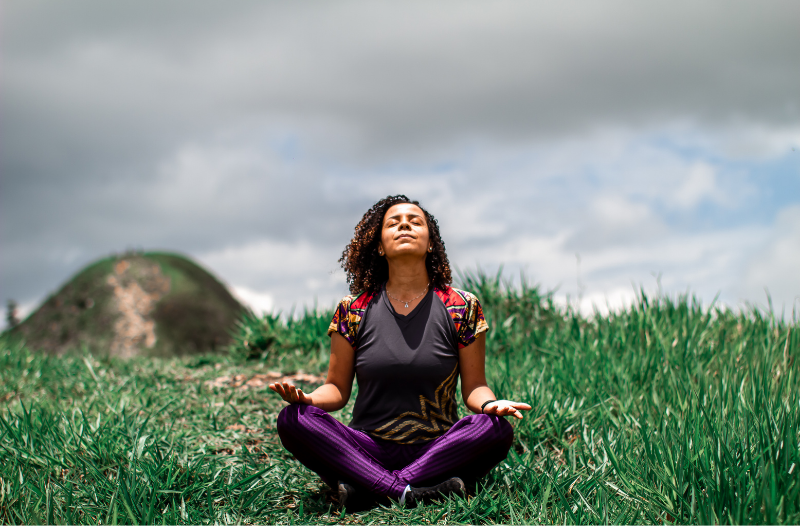
As a woman between the ages of 35-50, you know the importance of taking care of your overall well-being. By focusing on your physical, emotional, and spiritual health, you can find a sense of balance. In addition, you can also find resilience that can help you navigate the ups and downs of life. One way to support your overall well-being is through the practice of breath work.
But what is breath work, exactly? Breathwork is a type of conscious breathing practice that involves focusing on the breath. It has become a tool for relaxation, healing, and self-exploration. There are many different types of breath work practices, each with its own unique benefits and techniques. Some common types of breath work include:
Controlled Breathing
Controlled breathing involves focusing on the breath and using specific techniques to regulate the breath. This can be done by slowing the breath down, deepening the breath, or using a specific pattern of inhalation and exhalation. Controlled breathing can be helpful for reducing stress and anxiety, improving sleep, and enhancing concentration and focus.
Alternate Nostril Breathing
Alternate nostril breathing is a type of controlled breathing that involves alternating between breathing. Your alternating your breathing through the right nostril and the left nostril. This practice is believed to balance the right and left hemispheres of the brain. It is also believed to promote a sense of calm and well-being.
Ujjayi Breath
Ujjayi breath, also known as “ocean breath,” is a type of controlled breathing that involves partially closing the glottis (the opening between the vocal cords) to create a soft, hissing sound as you exhale. This practice is often used in yoga and is believed to help calm the mind and the body.
Holotropic Breath Work
Holotropic breath work is a type of breath work that involves using rapid, deep breathing. Add In music to induce an altered state of consciousness. This practice is believed to facilitate healing and self-exploration. It is often used in combination with other modalities such as body work or art therapy.

Benefits
By incorporating breath work practices into your daily routine, you can tap into the power of the breath to support your overall well-being. Some potential benefits of regular breath work practice include:
Reducing stress and anxiety
By focusing on the breath and using specific techniques to regulate the breath, you can help to reduce stress and anxiety and to find a sense of calm and relaxation.
Improving sleep
By incorporating controlled breathing techniques into your bedtime routine, you can help to relax the mind and the body and to improve sleep quality.
Enhancing concentration and focus
By bringing your attention to the breath, you can help to quiet the mind and to improve concentration and focus.
Promoting physical and emotional healing
Breath work practices such as holotropic breath work can be used to facilitate physical and emotional healing by helping to release stuck energy and emotions that may be stored in the body.
Increasing self-awareness
By bringing your attention to the breath, you can cultivate a sense of self-awareness and introspection that can help you to connect with your inner self.
Incorporating breath work into your daily routine can be as simple as setting aside a few minutes each day to focus on your breath. You can practice breath work seated in a comfortable position, or you can try incorporating it into your daily activities such as walking, cooking, or driving.
Remember to be patient with yourself and to listen to your body’s needs as you work towards finding what works best for you. With time and practice, you can learn to use the power of breath work to support your overall well-being and to find a sense of balance and resilience in your daily life.
“Thank you for reading this article. We hope that you found it informative and helpful. If you enjoyed this article read more here —> Wellness Articles. We appreciate your support and look forward to sharing more content with you in the future.”






